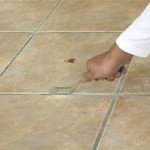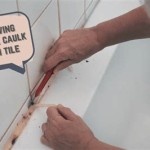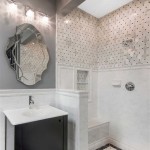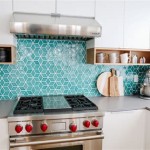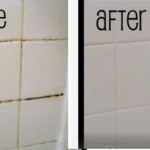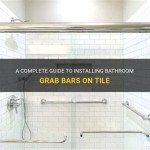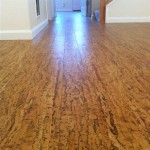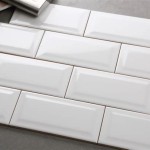What Is Tile Backing Board And Why Should I Use It?
Tile backing board, also known as cement board or tile backer, is a panel material designed to provide a solid and water-resistant substrate for tile installation. It serves as the foundation to which tiles are adhered, offering a stable and durable surface that is superior to materials like drywall or plywood in wet environments. Its primary function is to prevent moisture-related damage and ensure the longevity of tiled surfaces.
The composition of tile backing board typically involves a core of cementitious material reinforced with a fiberglass mesh. This combination creates a rigid yet lightweight panel that resists water absorption, mold growth, and warping, all of which are common problems faced when using unsuitable substrates. Understanding the properties and benefits of tile backing board is crucial for anyone undertaking a tiling project, particularly in areas exposed to moisture such as bathrooms, kitchens, and laundry rooms.
Key Point 1: Superior Water Resistance and Durability
One of the most compelling reasons to use tile backing board is its exceptional water resistance. Unlike drywall, which is highly susceptible to water damage and can crumble when exposed to moisture, tile backing board is designed to withstand prolonged exposure to water without deteriorating. The cementitious core actively resists water absorption, preventing it from penetrating the substrate and causing problems such as mold growth, rot, and structural weakening.
The fiberglass mesh embedded within the cement board adds another layer of durability. This mesh reinforces the board, preventing it from cracking or crumbling under stress. This is particularly important in areas that experience significant temperature and humidity fluctuations. The fiberglass mesh helps maintain the integrity of the surface ensuring that the tile remains bonded securely and prevents potential cracking or displacement issues.
The durability extends beyond just water resistance. Tile backing board is also resistant to impacts and abrasions. This is critical in high-traffic areas where the tiled surface is likely to experience wear and tear. It can withstand the weight of heavy objects and resist scratches and dents, preserving the appearance and structural integrity of the tiled surface for many years. This makes it a long-term investment that reduces the need for frequent repairs or replacements.
This enhanced durability translates to a longer lifespan for the tiled installation. By preventing water damage and resisting physical wear, tile backing board helps maintain the beauty and functionality of your tiled surfaces. This minimizes the long-term cost of ownership and provides a better return on investment compared to using less durable substrates.
Key Point 2: Preventing Mold and Mildew Growth
Mold and mildew growth is a significant concern in damp environments like bathrooms and kitchens. These organisms thrive on organic materials, such as the paper facing of drywall, and can quickly spread, causing unpleasant odors, unsightly staining, and potential health hazards. Tile backing board, being composed of inorganic materials, provides no food source for mold and mildew, effectively preventing their growth.
The cementitious composition of tile backing board inherently inhibits the growth of mold and mildew. The absence of organic components deprives these organisms of the nutrients they need to survive and multiply. This makes tile backing board a hygienic choice for areas prone to moisture and humidity, especially where ventilation is limited. This contributes to a healthier indoor environment by reducing the risk of respiratory problems and allergic reactions associated with mold exposure.
The water-resistant properties of tile backing board further contribute to mold prevention by minimizing moisture accumulation within the wall cavity. By preventing water from penetrating the substrate, it eliminates the damp conditions that promote mold growth. This is especially crucial in areas where leaks or spills are common, such as around showers, bathtubs, and sinks.
Selecting tile backing board as the foundation for a tile installation can significantly reduce the need for antifungal treatments and mold remediation. This saves time and money in the long run and ensures a healthier and more comfortable living environment. Its innate resistance to mold and mildew makes it a preventative measure that proactively protects against the harmful effects of these organisms.
Key Point 3: Creating a Stable and Secure Tiling Surface
A level and stable surface is essential for a successful tile installation. Uneven or unstable substrates can lead to cracked tiles, grout lines that are not uniform, and ultimately, a poorly finished result. Tile backing board provides a flat, rigid surface that is ideally suited for tiling. Its consistency and dimensional stability ensure that the tiles adhere properly and remain in place over time.
The thickness of tile backing board, typically ranging from ¼ inch to ½ inch, adds rigidity to the wall or floor, minimizing flexing and movement. This is especially important in areas where there is a lot of movement or vibration, such as floors or walls adjacent to appliances. The added stability prevents the tiles from cracking or popping loose due to substrate movement.
The surface of tile backing board is designed to provide a strong bond with tile adhesive. It typically has a slightly textured surface that improves adhesion and ensures that the tiles remain securely attached. This superior bond strength prevents tiles from shifting or detaching over time, even in areas that are subject to heavy use or exposure to moisture.
Moreover, tile backing board is relatively easy to install. It can be cut to size with a utility knife or circular saw, and it is typically attached to studs or joists with screws or nails. The ease of installation makes it a convenient choice for both professional contractors and DIY homeowners. The well-defined installation process ensures that it is properly installed, creating a flawless and durable tiled surface.
The uniform surface allows for precise tile placement and consistent grout lines. This results in a more professional-looking finished product and minimizes the risk of unevenness or lippage between tiles. A stable and secure tiling surface is the foundation for a beautiful and long-lasting tile installation.
Choosing the appropriate thickness is crucial for a stable tile backing. Thicker boards are generally recommended for floors or walls that are prone to flexing. The correct thickness can significantly affect the long-term stability and performance of the tiled surface, depending on the specifics of the installation and what loads or stresses the wall is expected to bear.
The installation process usually involves staggering the joints between the tile backing boards to increase the overall strength and stability of the wall. This technique will help prevent cracks in the grout lines that often happen in the areas of joints. The overall aim is to create a seamless, even surface that can support any type of tile.
In contrast to alternative surfaces such as green board, which is a moisture-resistant drywall, tile backing boards offer more reliable performance and longevity. The additional cost of tile backing boards is frequently offset by the savings in maintenance and repairs resulting from its superior moisture resistance and durability. Investing into the proper materials initially is a sound investment in the long term.

X Treme Tile Backer Board Mcdaids Bathroom Tiles

Tile Backerboard Material Options Fine Homebuilding

Tile Backer Board Rgc

Tiling On Wooden Floors Part 4 Overboarding Bathroom Guru

Lightweight Magnesium Oxide Boards For Use Under Tiles To Provide A Firm And Even Surface Complies With The Requirements Of En1246

Benefits Of Tile Backer Boards In A Wetroom Ccl Wetrooms

Tile Backer Board Benefits Uses Insulation

12mm Tile Backing Board Water Fireproof Nomoreply

6mm No More Ply Tile Backer Board

Densshield Tile Backer Georgia Pacific Building S
Related Posts

